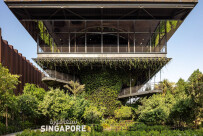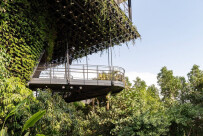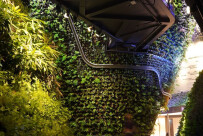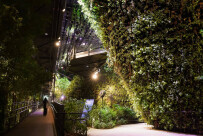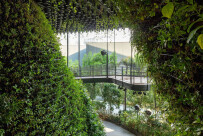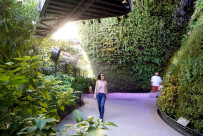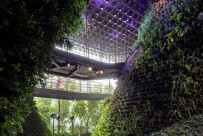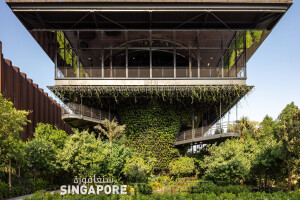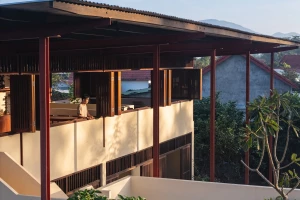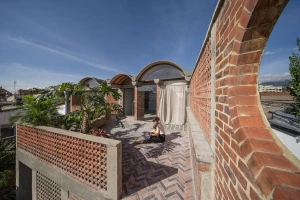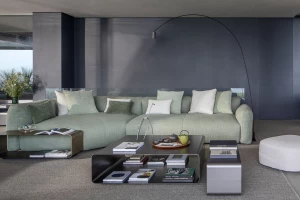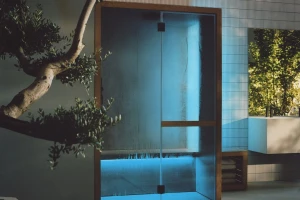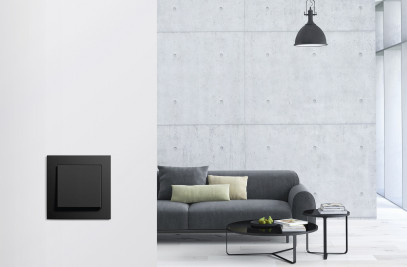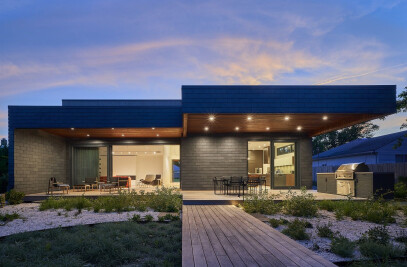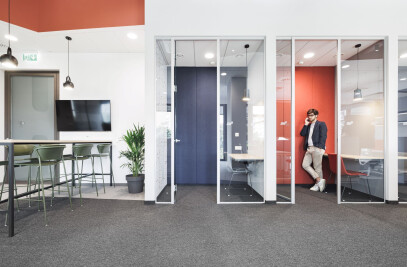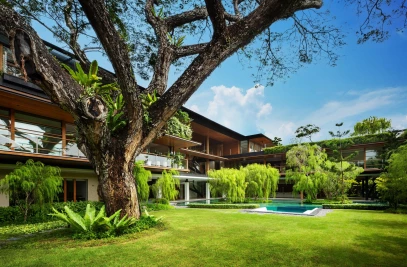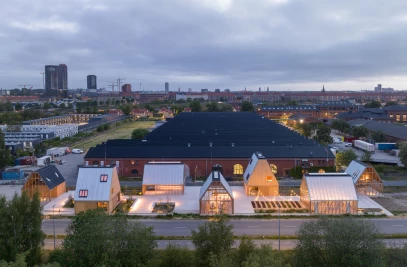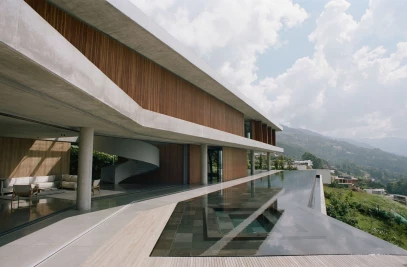With a theme of ‘Nature, Nurture, Future,’ the Singapore Self-Built Pavilion at the 2020 World Expo in Dubai is a seamless example of co-existence between nature and building. Designed by WOHA, the pavilion building prototype increases biodiversity, offers habitat for animals, and plays a role in fighting climate change with elements such as solar heat reduction, C02 and NOX sequestration, and reduction of other polluting elements.

Fueled by solar energy along with solar desalination systems, the building incorporates passive strategies such as cross-ventilation and solar control, maintained a net-zero energy footprint for the duration of the Expo.

Visitors to the pavilion are greeted by a spacious green volume of forest trees and hanging gardens reminiscent of Singapore’s tropical environment. Garden paths guide visitors through a rolling landscape with streams, planted berms and 9-meter-tall vertical three thematic cones.

The first cone houses a multimedia exhibit of Singapore’s approach to global issues. The next cone features Singapore’s many different colourful and vibrant orchid species. The last cone is a green sensory space complete with rainbows, fog, and a spinning dipterocarp sculpture. Throughout the visitor’s journey, QR-linked information relays key information about Singapore’s unique DNA.

A canopy walk ends up in a sky market. Sheltered under a solar canopy made up of 517 solar panels, the space hosts a curated food menu along with exhibition programs.

Amid the desert heat, visitors are kept cool and comfortable throughout their experience of the pavilion with strategies such as shading, evapotranspiration, and fine misting fans cooling the air by approximately five to ten degrees Celsius.

